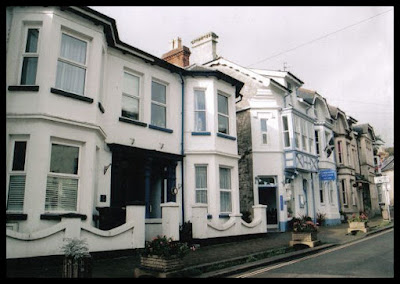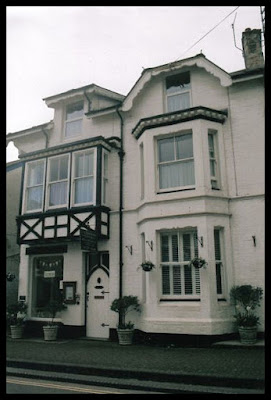This
is a post I've been seemingly working on forever and difficult to get
right due to the amount of disparate photos taken on many of my walks there. They are all different depending on the season, weather, make of photo film and processing, which made it difficult to put together, but I'll just start from the northern end of the walk and we'll take it from there.
A
favourite walk for many local residents, Seaton Marshes is a Local
Nature Reserve with a wide variety of wildlife, especially water fowl
and other birds. The white badge on the post (above and below) has an owl on. I wasn't sure what it meant so I asked the people at East Devon Area of Outstanding Natural Beauty who kindly told me that the posts were part of a round Seaton walk to highlight the natural assets. The person who arranged it is no longer in the area so it's been discontinued but the posts are now part of Seaton's heritage.
Awarded a Green Flag for its natural history, access and facilities, it's also had a community focus with events throughout the year, including some 'wet and wild' weekends with many activities for all ages, as well as regular 'meet the birds' sessions at the bird hide.
A
freshwater grazing marsh bordering one side of the River Axe, most of
the area is off-limits to humans, ensuring a safe haven for wildlife in
their natural habitat. Also, some parts are used as grazing farmland for
sheep, cattle and horses.
A path runs along the western edge of the marshes with the River Axe bordering the eastern side, beyond which is the road between the village of Axmouth and Seaton. Axmouth can be seen nestling below the hill seen in the above photos.
The photos below show part of the path in springtime with lovely blossom on the blackthorn trees.
More of the nature seen around the path of some lichen, one of several leats and a tree embraced by ivy.
However,
apart from the main path running along the one side, there are also
some designated areas of access, including a long stretch out to the
bird hide which sits near to the tram line running alongside the river. The bird hide is partially fenced off nearer to it so that human activity doesn't disturb the birds.
Buildings in the distance, above photos, show the proximity of the town (a very small
seaside town). It's only a walk of 10 to 15 minutes from my home to the
marshes yet feels quite
wild.
The bird hide, below.
The town water treatment plant is also situated on the edge of the path, where treated waste water is released below ground into a run-off to the sea. To learn more about the water treatment plant I have an article here.
There's a great little nature trail around the fenced-off plant, seen below.
A signpost at the end of the walk shows that just further along is the delightful Borrow Pit, a beautifully serene deep pool with surrounding trees, pathway and a wooden walkway part way across the southern end of the water.
Borrow Pit is a civil engineering term for an area in which earth has been scooped out for use elsewhere, leaving a deep hole. In this particular case the earth was used to create banks alongside the path out to the hide; the pond suitable for deep water wildlife.
It was in
late November 2010 I discovered Borrow Pit to be accessible, which I
didn't realise before, and decided to try out a replacement camera
there. The lowering sun really picked out the willow tree in the photo above.
The
walkway only stretches partially across the water where you can sit and
watch the wildfowl and other birds, have a picnic or just enjoy being
in nature.
It is such a beautiful, serene place that I took a fair few photos and had a walk all the way around the pond.
The photos above were taken near the northern end. Just behind where I stood is a circle of benches surrounding a fire pit. A great place to spend some time with friends around a camp fire and have a few beers. ;)
Although still quite early in the afternoon, late November with the sun slanting from the south-west made fabulous sillouettes when viewed from the northern end of the lake.
And there we go! I did manage to resist putting in all the photos, although I might have gone a bit overboard with the pond ones, lol. Anyway, I hope that was of some interest. I'm not sure what's coming up next so I can't give you a heads-up on that. I've got several articles started and partly written, including two about Rougemont Castle in Exeter. I could do with more photos for part one but I can't manage the journey yet - maybe next year - but I might get it finished anyway with what I've already got and add some more photos later.
And I'm rambling again! Cheers. :)

















































































